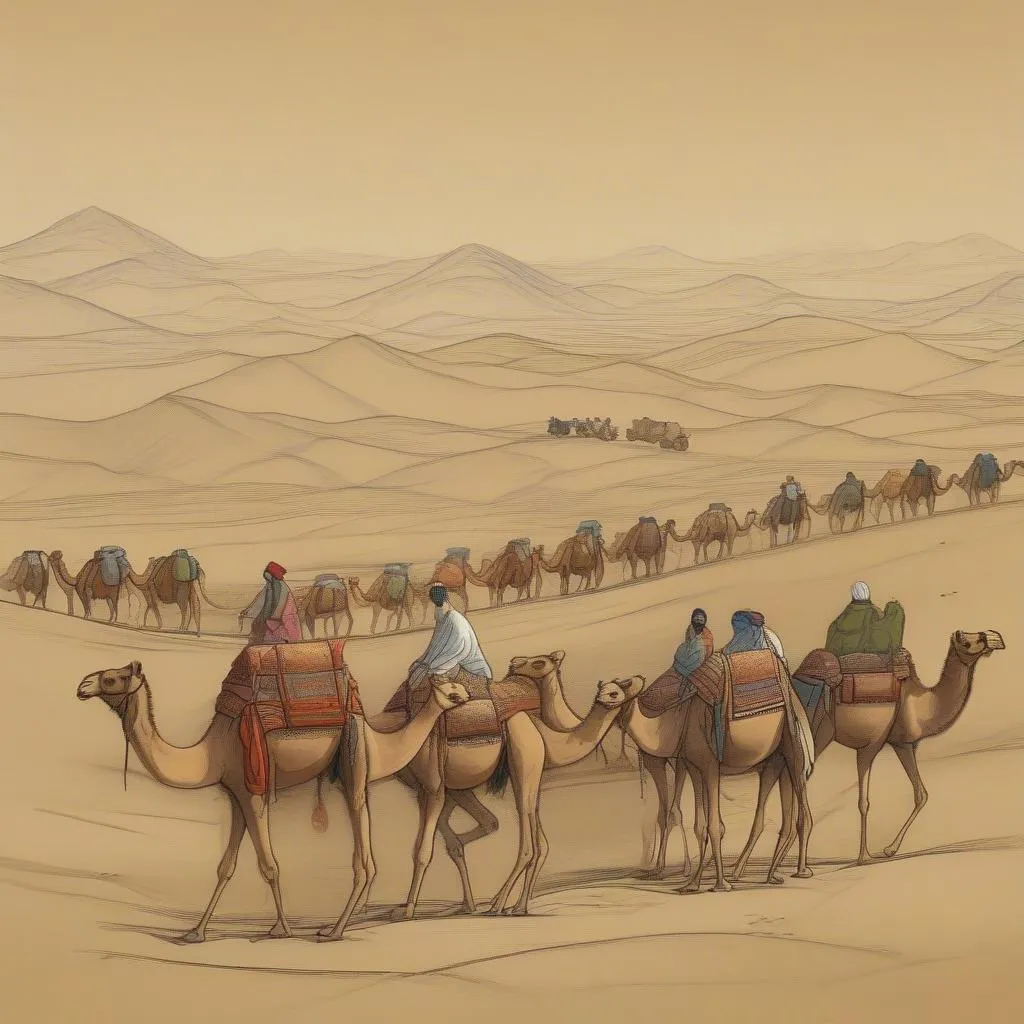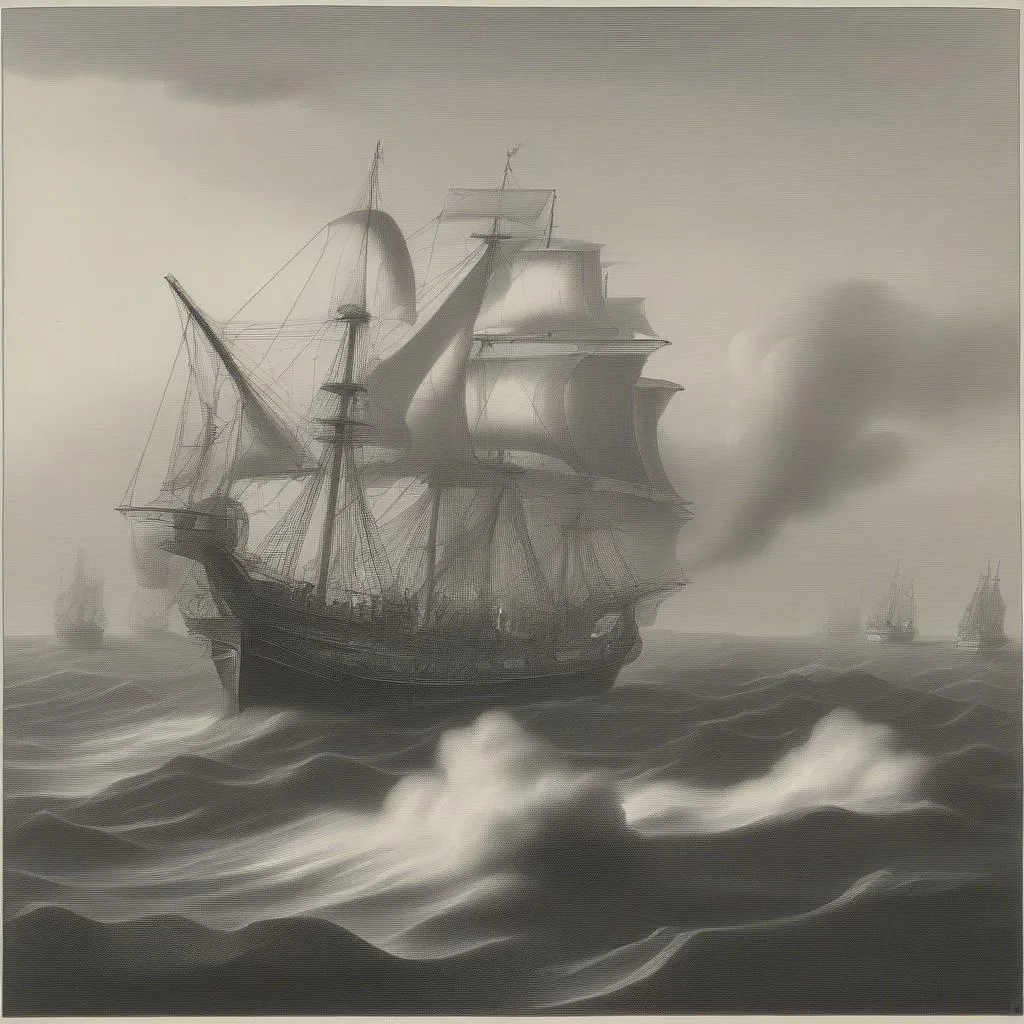Have you ever wondered how silk from the Far East ended up gracing Roman emperors or how spices from India found their way to medieval European kitchens? The answer lies in the fascinating history of trade routes – the ancient highways of commerce and culture that crisscrossed continents, connecting civilizations and shaping the world as we know it.
What is a Trade Route?
A trade route is essentially a network of pathways, whether by land or sea, that were used by traveling traders and merchant ships to transport goods, ideas, and culture between different regions. These routes could span vast distances, like the legendary Silk Road connecting China to Europe, or be more localized, like the Amber Road traversing Europe from the Baltic Sea to the Mediterranean.
The Impact of Trade Routes
Trade routes weren’t just about moving merchandise; they were dynamic arteries that pulsed with life, fostering a vibrant exchange of knowledge, innovation, and cultural influences. Imagine caravans laden with exotic goods, accompanied by scholars, artists, and storytellers, traversing deserts and mountains, spreading ideas and beliefs along the way.
Here’s how trade routes impacted the world:
- Economic Growth: They fueled economic prosperity by facilitating trade, creating new markets, and fostering specialization in different regions.
- Cultural Exchange: Ideas, religions, technology, and artistic styles flowed freely along these routes, leading to a rich tapestry of cultural exchange. Think of the spread of Buddhism from India to China along the Silk Road or the influence of Islamic art and architecture in Spain, a legacy of the Trans-Saharan trade route.
- Urban Development: Major cities often sprung up at strategic points along these routes, serving as bustling hubs of commerce and cultural exchange. Think of cities like Constantinople, strategically positioned on the Silk Road, or Timbuktu, a major trading post on the Trans-Saharan route.
Famous Trade Routes Throughout History
History is brimming with tales of legendary trade routes, each with its own unique story to tell. Here are a few examples:
- The Silk Road: Perhaps the most famous of them all, the Silk Road wasn’t just one road, but a network of routes that connected East Asia to Europe for over 1,500 years. From luxurious silks and spices to gunpowder and paper, the Silk Road facilitated the exchange of goods, ideas, and culture on an unprecedented scale.
- The Incense Route: This ancient network of land and sea routes transported frankincense and myrrh, highly prized fragrances used in religious ceremonies and perfumes, from Southern Arabia to the Mediterranean world.
- The Trans-Saharan Trade Route: This remarkable route traversed the harsh Sahara Desert, connecting North Africa to sub-Saharan Africa. Gold, salt, ivory, and enslaved people were some of the key commodities traded along this route.
 Silk Road Caravan
Silk Road Caravan
Planning Your Own Journey on a Historic Trade Route
Today, many of these ancient trade routes have been revived as tourist destinations, offering travelers a chance to retrace the footsteps of history and experience the vibrant cultures that flourished along these ancient highways.
Here are some tips for planning your own journey:
- Choose Your Route: Research different trade routes and decide which one piques your interest. Are you drawn to the exotic allure of the Silk Road or the desert landscapes of the Trans-Saharan route?
- Research and Plan: Once you’ve chosen your route, research the best time to visit, visa requirements, and transportation options.
- Pack Appropriately: Remember to pack for all types of weather conditions and bring comfortable walking shoes.
- Learn Basic Phrases: Learning a few basic phrases in the local language can greatly enhance your travel experience.
- Be Respectful: Remember that you are visiting places with rich histories and cultures. Always be respectful of local customs and traditions.
FAQs About Trade Routes
What kinds of goods were traded on these routes?
The variety of goods traded was astonishing, ranging from everyday necessities like salt and grain to luxury items like silk, spices, porcelain, precious metals, and gemstones.
How long did it take to travel on these routes?
Travel times varied greatly depending on the distance, the mode of transport, and the season. A journey on the Silk Road, for instance, could take months or even years to complete.
Were these routes dangerous?
Traveling on these routes could be perilous, with challenges like harsh weather conditions, bandits, and wild animals.
 Incense Route Ships
Incense Route Ships